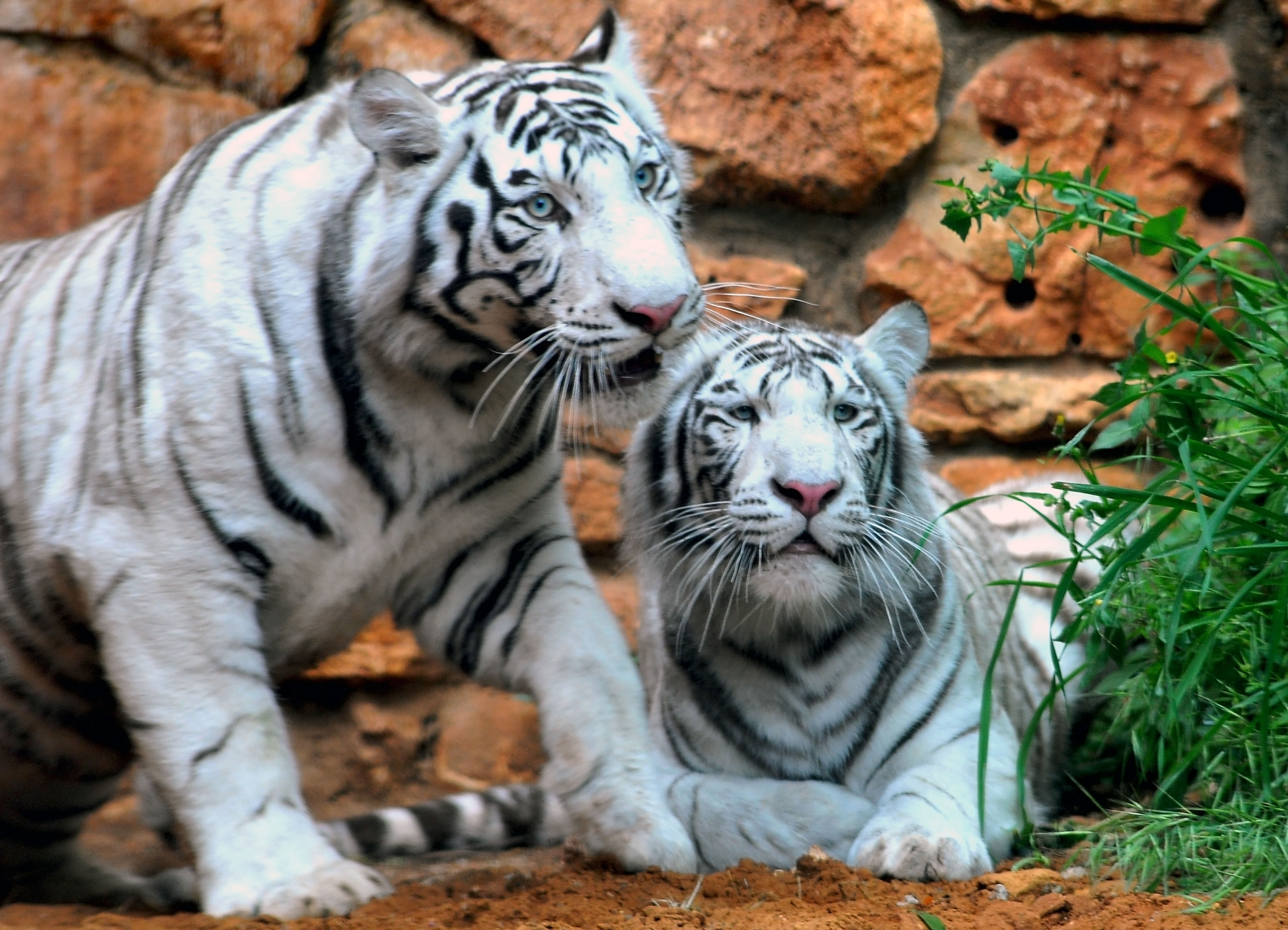
White tigers are distinct for the normal colouration in that they lack the pheomelanin pigment that in normal tigers produces the orange colour. They still produce the pigment eumelanin and hence are not considered albino. Compared to normal tigers without the white gene, white tigers tend to be somewhat bigger, both at birth and as fully grown adults.Kailash Sankhala, the director of the New Delhi Zoo in the 1960s, said "one of the functions of the white gene may have been to keep a size gene in the population, in case it's ever needed." Dark-striped white individuals are well-documented in the Bengal Tiger subspecies, also known as the Royal Bengal or Indian tiger (Panthera tigris tigris or P. t. bengalensis), and may also have occurred in captive Siberian Tigers[citation needed] (Panthera tigris altaica), as well as having been reported historically in several other subspecies.[citation needed] Currently, several hundred white tigers are in captivity worldwide, with about one hundred being found in India. Nevertheless, their population is on the increase.Nandankanan in the state of Odisha ,India, is the host zoo for white tigers. White tigers were born to normal coloured parents in 1980, a unique event in the world.
The unusual white colouration of has made them popular in zoos and entertainment showcasing exotic animals. German-American magicians Siegfried & Roy became famous for breeding and training two white tigers for their performances, referring to them as "royal white tigers," the white tiger's association with the Maharaja of Rewa.
Martand Singh, the last Maharaja of Rewa, captured the first living white tiger observed in nature, during his 1950 visit to Govindgarh jungle at Rewa, Madhya Pradesh, India. With help from official veterinary experts, he attempted breeding the white tiger with coloured female tigers. Though initial attempts failed, he did eventually succeed and created a second generation of white tigers. In time, this breeding population has been expanded around the world.
